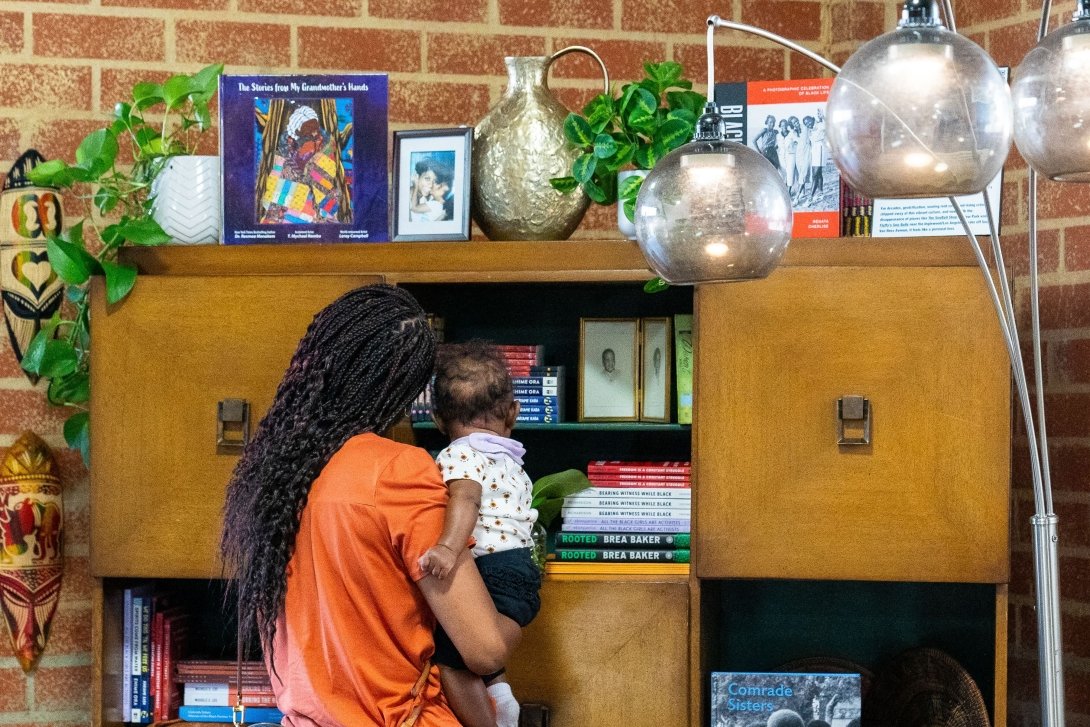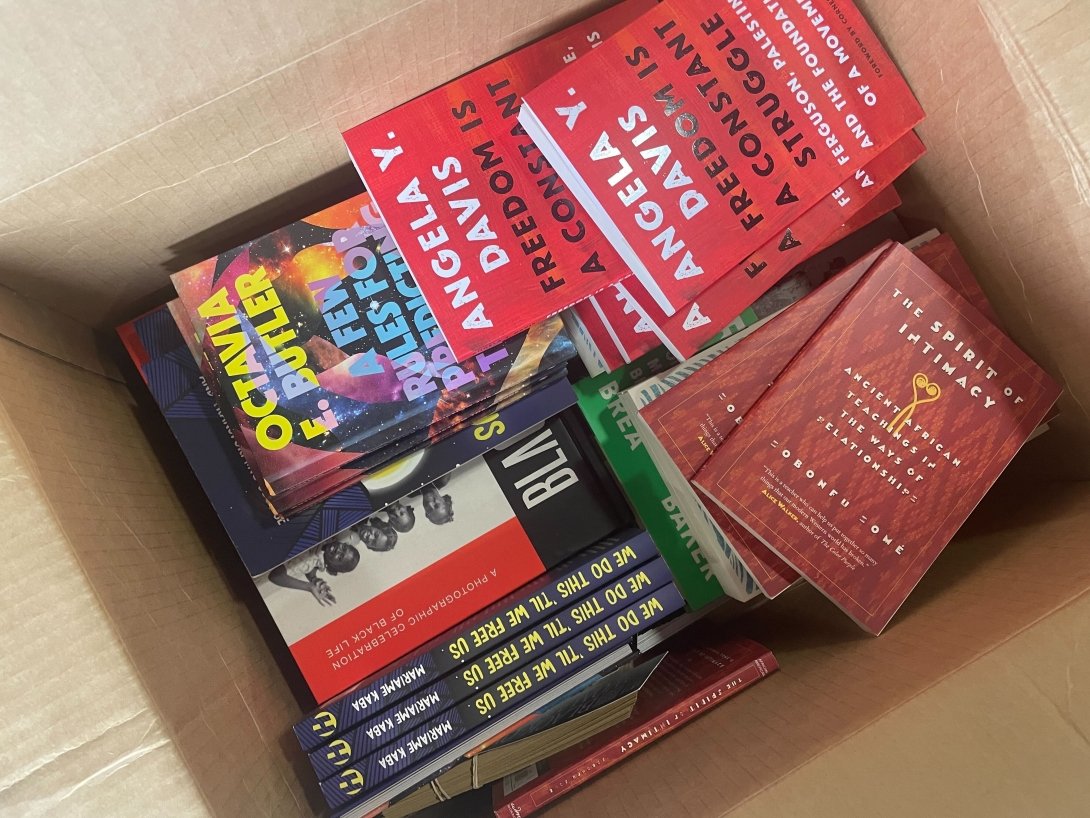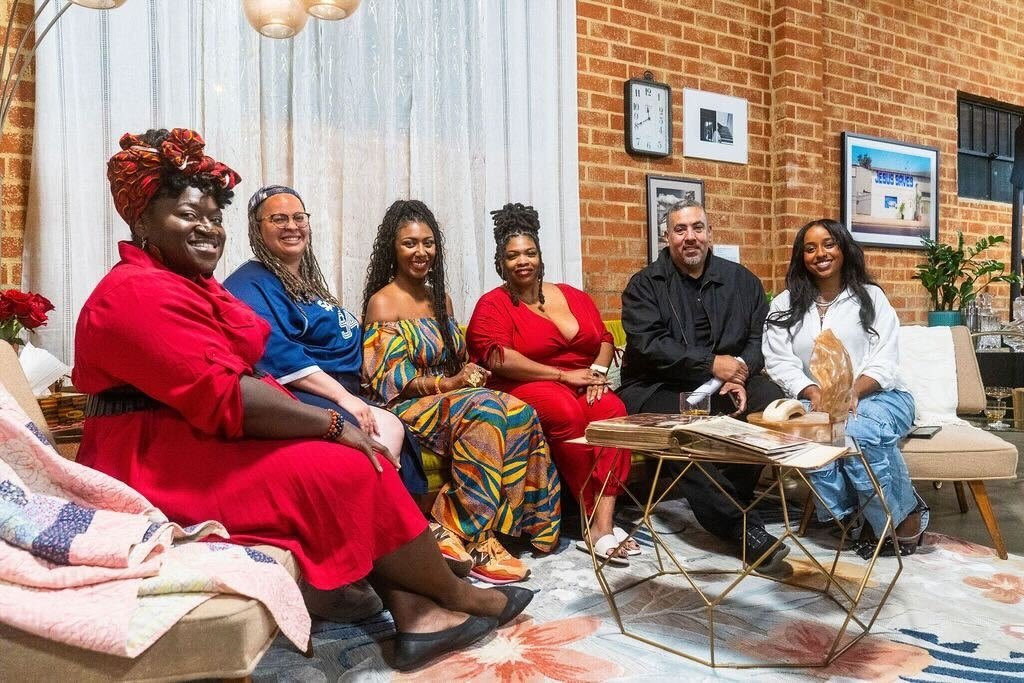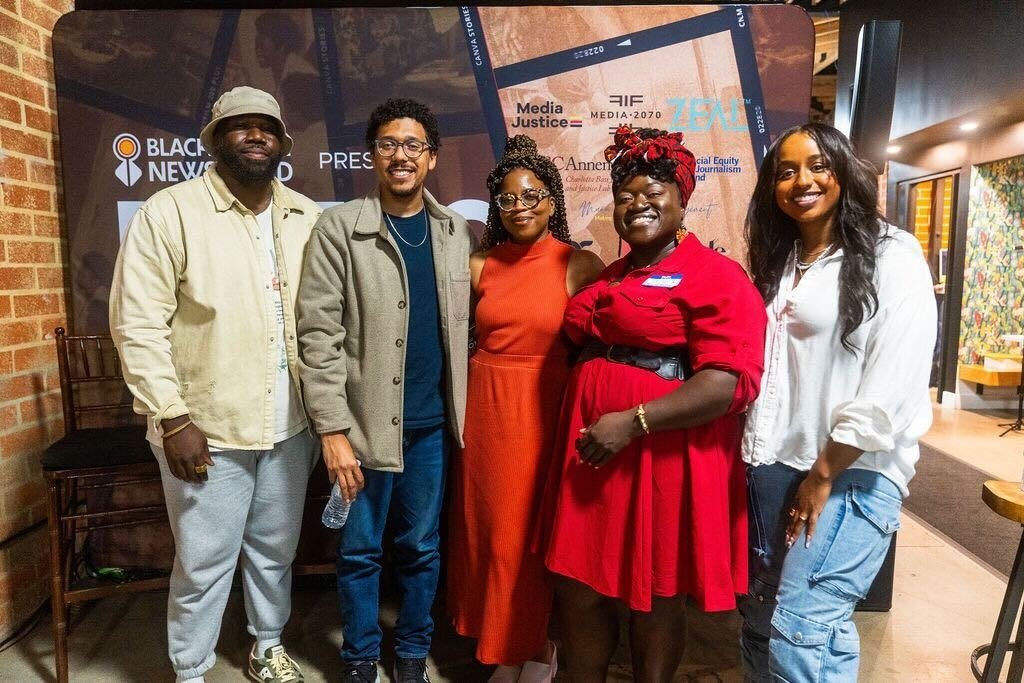Riot to Repair: Reparative Journalism Built Through Communion

A woman examines objects in the living room created for the Black Future Newsstand exhibit in Los Angeles.
Halline Overby
Black Future Newsstand, a historic project from Media 2070 and the Black Thought Project, debuted in Harlem in 2023 during the week leading up to Juneteenth. Black Future Newsstand acts as a portal for media reparations that asks “What does a media system that loves Black people look and feel like in a future where reparations are real?” An art installation, the newsstand was filled with Black-owned publications that hold Black stories with all the care, tenderness, joy and beauty they deserve. People also had the opportunity to offer their dreams for the future on the newsstand’s “Black Thought Wall”.
From Harlem to Austin to Chicago, Black Future Newsstand has ignited important conversations around radical Black media and futures. At the beginning of May, we headed to Los Angeles to premiere a new version of the Black Future Newsstand that explored the impact of journalism on Black communities.
Black Future Newsstand debuts in Los Angeles
The Black Future Newsstand Presents: Riot to Repair Soundscape Exhibition was a multimedia immersive showcase that provided a lived experience of the power of reparative storytelling. The exhibit was presented by Media 2070, ZEAL Co-op, MediaJustice, Charlotta Bass Journalism & Justice Lab at USC Annenberg, Racial Equity in Journalism Fund, Black River Life Media and Axle Impact Studios.
This dynamic collaboration wove a thread of stories together that captured the power of culture, media and arts to tell reparative and transformative stories. This activation was held as the culmination of both Media 2070’s fellowship with the Charlotta Bass Journalism & Justice Lab and The Remedy Is Solidarity, ZEAL Co-op’s global multimedia anthology on reparations.
The anchor of this multidisciplinary exhibition was the Riot to Repair audio archive, which Dr. Allissa Richardson and students at the USC Charlotta Bass Journalism & Justice Lab created. This archive included a curated selection of audio interviews from Los Angelenos describing their lived experience of the death of George Floyd and the 2020 uprisings. The interviews uplifted stories of grief, multiracial solidarity, the reclamation of our voices and the repetitive nature of anti-Black violence in the United States.
From those themes, we curated four additional installations that highlighted the power of media and art to build Black narrative power. We featured a rendition of the Black Future Newsstand, set in a grandmother’s living room to pay homage to the different places and people that create space for Black storytellers to thrive. The exhibition also included an art gallery curated in partnership with ZEAL that told a visual story of riot and repair and featured work from six renowned local artists; “Windows of Opportunity,” Dela Wilson’s augmented-reality artifact that highlighted the United States’ historical relationship to reparations and explored Evanston, Illinois, as a reparative case study; and Reverberations, Black River Life Media’s immersive soundscape, an emotional and reverent listening experience grounded in Afrofuturism.
Riot to Repair: a celebration of joy and creativity
Over two days, we welcomed 100 media technologists, journalists, students, artists and funders to enjoy the power of reparative media, art and technology. This exhibition transported participants to a grandmother’s living room, a place where Black stories of conflict, ancestry, grief, joy, power and solidarity thrive.
We hosted panel discussions about the beauty and intention behind the art-curation process, the cyclical nature of anti-Black violence in the media and the role Black narrative power plays in combating tech corporations’ efforts to capture government institutions and resources. Participants enjoyed a group meditation session with Alli Simon of Black Being LA, and during a press conference members of the media got an exclusive preview to learn more about the interconnected themes.
Participants left feeling they understood the real-world impacts of reparative journalism and could communicate a vision for communal healing more clearly.
Through care and intention, Riot to Repair showed the transformation available to us through the processes of reparative media-making. And we’re already discussing plans to take Black Future Newsstand to future locations. Sign up for our newsletter and follow us on social media to be the first to know where we’re headed next! If you’re interested in bringing Black Future Newsstand and its companion programming to your area, reach out to our team to schedule a chat.
Explore some of the photos from Riot to Repair below and donate today to help the Media 2070 team bring Black Future Newsstand to other locations.

A visitor takes in the work from six local artists
Halline Overby

A selection of books featured in the exhibit
Halline Overby

Members of the Media 2070 team sit within the Black Future Newsstand exhibit
Halline Overby

Anshantia Oso and Diamond Hardiman of the Media 2070 team (on the right) with visitors at the Black Future Newsstand exhibit
Halline Overby